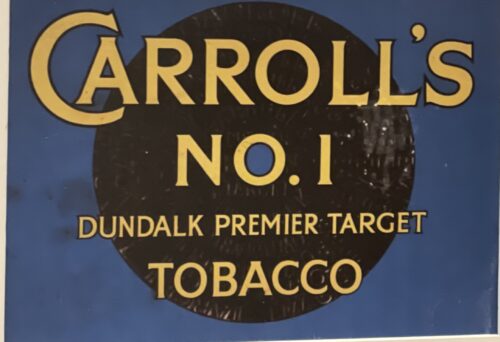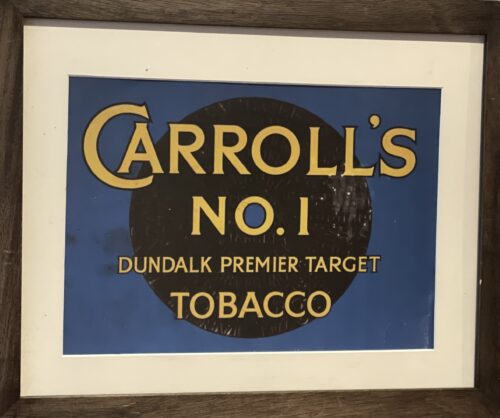P. J. Carroll & Company Limited, often called Carroll's, is a tobacco company in Republic of Ireland. It is Ireland's oldest tobacco manufacturer and is now a subsidiary of British American Tobacco Plc.Its cigarette brands were among the best selling in Ireland in the twentieth century. Its factory was for decades the largest employer in Dundalk.
Patrick James Carroll (b. 1803) completed his apprenticeship as a tobacconist in 1824 and opened a shop in Dundalk, later also manufacturing cigars.Patrick James moved to Liverpool in the 1850s. His son Vincent Stannus Carroll expanded the firm in the later 19th century.His son James Marmion Carroll moved to a house outside Dundalk.A second factory was opened, in Liverpool, in 1923. The company went public in 1934.
A purpose-built factory opened in 1970. Designed by Ronnie Tallon of Michael Scott and Partners, it was described by Frank McDonald as "way ahead of anything else in Ireland at the time". In 1974 to mark the 150th anniversary of its founding, P.J. Carroll published an illustrated booklet by the writer James Plunkett: P. J. Carroll & Co. Ltd, Dublin & Dundalk - A Retrospect, outlining the development of the company in its historical context.
Carroll's was acquired by Rothmans in 1990; Rothmans was acquired by British American Tobacco Plc in 1998. The company's share of the Irish tobacco market is around 17%. In 2002 the Dundalk site was sold for €16.4m to the Department of Education and repurposed for the campus of Dundalk Institute of Technology. Carroll's rented back a small section for its remaining factory operations, until finally ceasing its Dundalk operations in 2008. Carrolls remains an Irish company with deep connections to hundreds of retirees and nearly 40 staff based in their Dublin offices.
PJ Carroll agrees that the Government should regulate on smoking and health issues; this regulation should be informed, evidence-based, and proportionate. PJ Carroll and BAT acknowledge that smoking is a cause of various serious and fatal diseases, including lung cancer, emphysema, chronic bronchitis and cardiovascular diseases.
In 2013,some lawmakers suggested PJ Carroll should be prohibited from speaking with lawmakers on the basis of the WHO Framework Convention on Tobacco Control (FCTC). PJ Carroll comes under the definition of Tobacco Industry as set out by the FCTC, but the FCTC does not prohibit engagement between tobacco companies and public representatives, but puts in place strict rules relating to transparency.
Brands
- "Carrolls Number 1", its first filter cigarette, was launched in 1958.
- "Carrolls Additive Free* Red" and "Carrolls Additive Free* Blue" was launched in 2013 as additive free* cigarettes started to gain popularity across Western Europe. (*No additives in the tobacco blend does NOT mean a less harmful cigarette)
- "Pall Mall" is one of PJ Carroll's strongest growing brands.
- Vogue is PJ Carroll's premium cigarette brand.
- "Major",[4] a full flavor cigarette.
- "Sweet Afton", launched in 1919, was named after "'Afton Waters" by Robert Burns, whose sister Agnes was buried in a graveyard opposite the old Carrolls factory in Church Street, Dundalk.[2]Sweet Afton cigarettes were discontinued in the Autumn of 2011.










